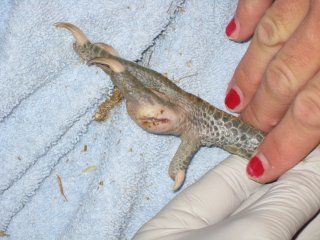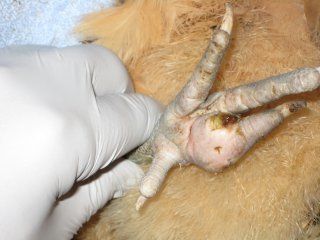- Apr 27, 2008
- 8
- 1
- 7
Here's the scoop. My hen has bumblefoot. So far I have soaked foot, removed scab, removed the infectious hard, white sac (gross). This happened 5 days ago. Every day so far since I have changed the dressings, including applying iodine and triple antibiotic. We have been treating daily with terramycin(sp?) via solulable powder in their water. Yesterday I reopened the foot because there still is substantial bulge, but did not find any more infection, seemed to be more swelling of the surrounding tissue. I squeezed around the bulge to try to get any infectious sacs to move toward the new incision and could get nothing. My question, is this much swelling normal at this stage? She is acting fine, other than not wanting to walk on the foot. There is obiously some infection as her affected foot/leg is very warm as opposed to the other foot/leg. She is eating and drinking well, laying daily. Should I create incision in another area to try and look for infectious sacs? I don't want to unnecessarily dig at her foot. I feel bad enough cutting her open. Please, any advice would be great. I want to make sure I'm doing the best for her.




Last edited:


